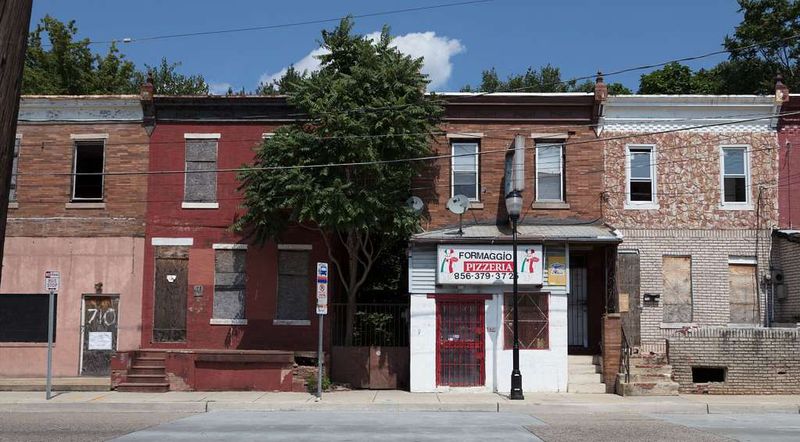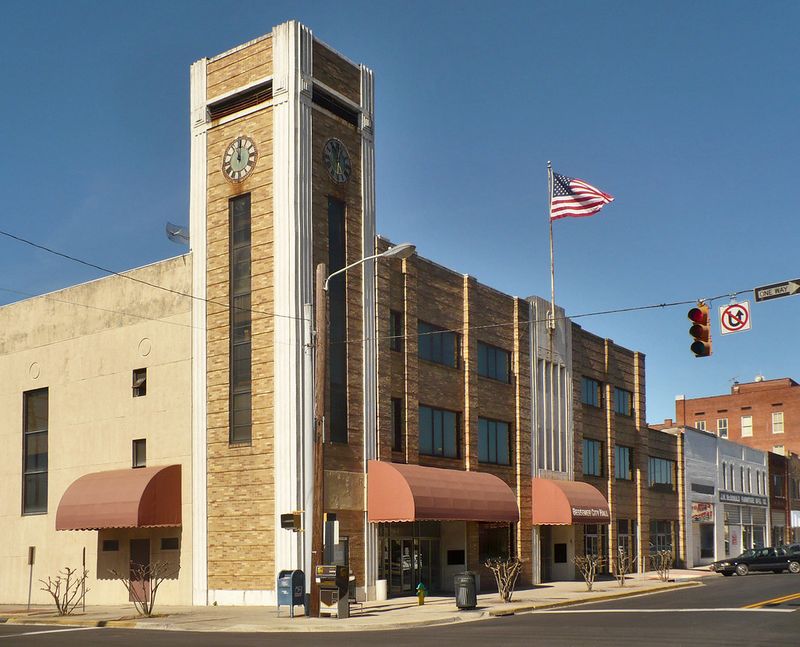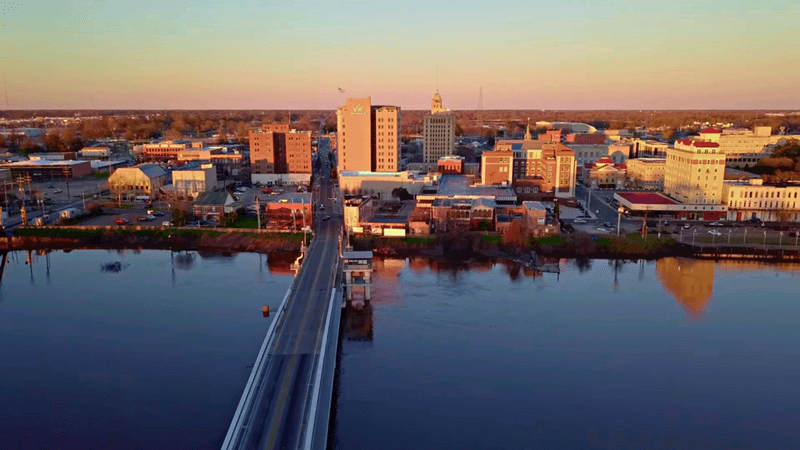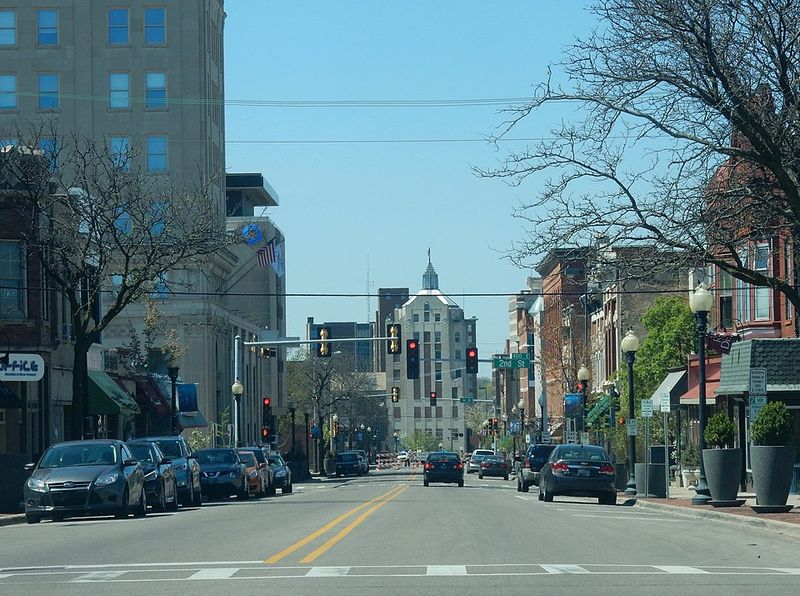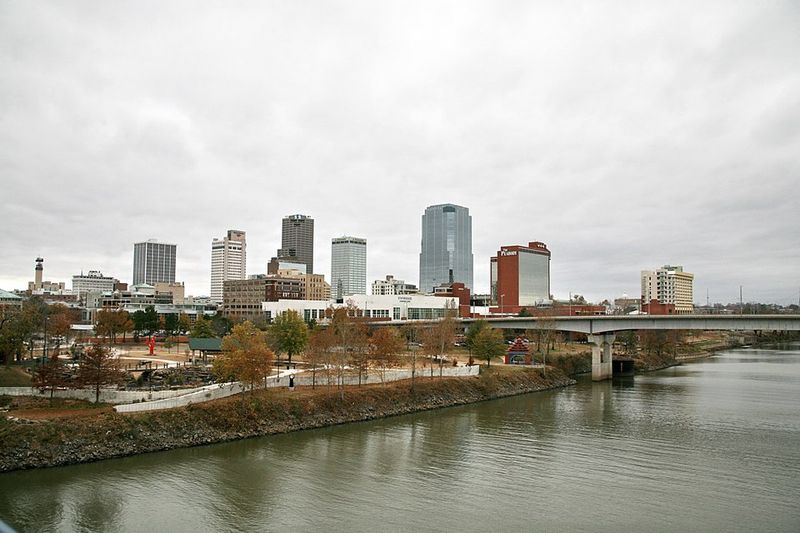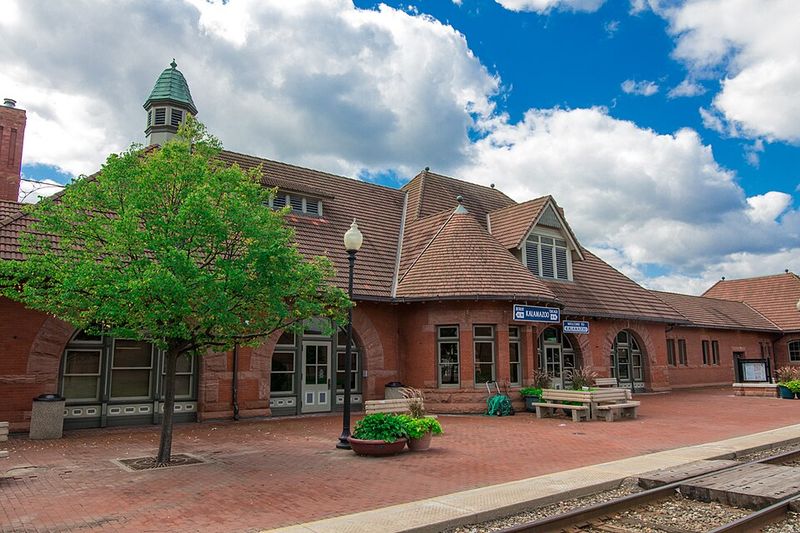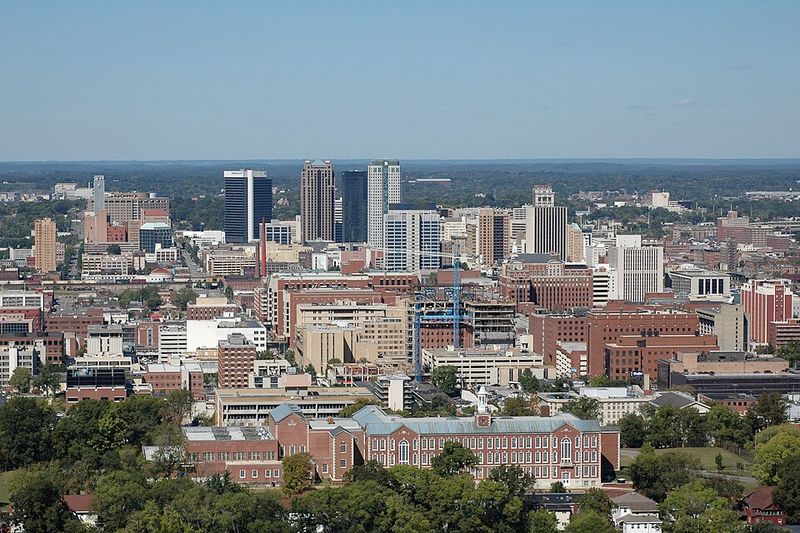Living in America offers countless opportunities, but not every city provides the same quality of life. Some places face serious challenges like high crime rates, economic struggles, and crumbling infrastructure that make daily life difficult for residents. Understanding which cities are struggling the most can help people make informed decisions about where to live and work, while also highlighting areas that need more support and investment.
1. Gary, Indiana
Once a thriving steel town, Gary has seen better days. The city began its downward spiral in the 1960s when the steel industry started declining, taking jobs and hope with it. Thousands of families packed up and left, leaving behind empty houses and shuttered businesses.
Crime became a serious problem as the economy collapsed. With fewer people paying taxes, the city couldn’t afford to maintain roads, schools, or police protection properly. Urban decay spread through neighborhoods that once bustled with activity.
Today, Gary struggles with one of the highest violent crime rates in the nation. The shrinking tax base makes it nearly impossible to fix infrastructure or attract new businesses that could turn things around.
2. Camden, New Jersey
Poverty grips Camden like few other American cities. Nearly 36% of residents live below the poverty line, struggling to afford basic necessities. Crime statistics paint an even bleaker picture, with violent offenses occurring at alarming rates that frighten residents and visitors alike.
Schools in Camden face severe underfunding, making it hard for children to get quality education. Teachers work with outdated materials in crumbling buildings. Many students graduate without the skills they need for college or good jobs.
Abandoned buildings dot the landscape throughout the city. These empty structures become havens for illegal activity and symbolize the economic despair that has plagued Camden for decades, making recovery seem distant.
3. Flint, Michigan
Flint became infamous worldwide when residents discovered their tap water was poisoned with lead. The water crisis, which began in 2014, exposed thousands of children to dangerous toxins that can cause permanent brain damage. Trust in government officials shattered completely when people learned authorities knew about the problem but did nothing.
Beyond contaminated water, Flint faces crushing poverty following the collapse of the auto industry. General Motors once employed tens of thousands of workers here, but those jobs disappeared, leaving economic devastation in their wake.
Recovery has been painfully slow. While water quality has improved, many residents still refuse to drink from their taps, relying instead on bottled water for cooking and drinking.
4. Detroit, Michigan
Motor City has been fighting an uphill battle for decades. Detroit declared bankruptcy in 2013, becoming the largest American city ever to do so. Population dropped from nearly 2 million residents in the 1950s to under 700,000 today, leaving entire neighborhoods virtually abandoned.
High crime rates continue plaguing communities throughout the city. Violent offenses occur frequently, and property crimes remain a constant concern for homeowners and business owners alike. Police struggle with limited resources to protect such a large area.
Infrastructure crumbles in many neighborhoods where streetlights don’t work and roads develop dangerous potholes. Despite recent downtown revitalization efforts, much of Detroit still struggles with the basic services residents deserve.
5. St. Louis, Missouri
Violence has earned St. Louis a terrible reputation. The city consistently ranks among America’s most dangerous places, with violent crime rates that shock even seasoned law enforcement professionals. Shootings and assaults happen with disturbing frequency in certain neighborhoods.
Poverty concentrates in specific areas, creating stark divides between wealthy and struggling communities. Many families can barely make ends meet, working multiple jobs just to keep roofs over their heads. Educational opportunities vary dramatically depending on which neighborhood you call home.
Aging infrastructure adds to residents’ frustrations. Roads need repairs, bridges require attention, and public transportation systems struggle with outdated equipment. The city needs massive investment to address these fundamental problems.
6. Baltimore, Maryland
Charm City faces challenges that would overwhelm many communities. Violent crime statistics place Baltimore among the nation’s most dangerous cities year after year. Drug trafficking fuels much of this violence, tearing apart families and destroying lives across multiple generations.
Economic opportunities remain scarce for many residents, particularly in historically underserved neighborhoods. Unemployment runs high, and good-paying jobs seem impossible to find without connections or advanced education. Schools struggle to prepare students for success despite dedicated teachers’ best efforts.
Infrastructure problems compound daily difficulties. Water main breaks, power outages, and transportation issues make simple tasks frustrating. The city needs billions in improvements but lacks the resources to address everything at once.
7. Youngstown, Ohio
Steel built Youngstown, and steel’s departure nearly destroyed it. When mills closed in the 1970s and 1980s, the city lost more than half its population practically overnight. Workers who had spent entire careers in steel found themselves jobless with few transferable skills.
Vacant properties now outnumber occupied homes in some neighborhoods. These empty buildings attract vandalism and illegal dumping, dragging down property values for families who stayed. Demolishing abandoned structures costs money the city doesn’t have.
Population continues declining as young people leave seeking better opportunities elsewhere. Without a strong tax base, Youngstown can’t invest in improvements that might attract new residents or businesses, creating a vicious cycle of decline.
8. Memphis, Tennessee
Music City’s less famous neighbor faces serious safety concerns. Memphis consistently reports violent crime rates that rank among America’s highest, making residents nervous about walking in their own neighborhoods after dark. Gang activity contributes significantly to these troubling statistics.
Poverty affects nearly one in four Memphis residents. Many families struggle to afford housing, healthcare, and nutritious food on limited incomes. Children growing up in poverty face enormous obstacles to achieving success later in life.
Infrastructure shows its age throughout the city. Roads develop potholes that damage vehicles, and aging water systems need expensive repairs. Natural disaster risks, including tornadoes and flooding, add another layer of concern for residents already dealing with daily challenges.
9. Bessemer, Alabama
Violence dominates life in Bessemer more than almost anywhere else in America. Recent data shows violent crime occurring at a staggering rate of approximately 33 incidents per 1,000 residents. That means roughly one in thirty people experiences violent crime annually, creating constant fear throughout the community.
Economic opportunities barely exist for many residents trapped in cycles of poverty. Manufacturing jobs that once sustained families have largely disappeared, replaced by low-wage service positions that can’t support households. Young people see little reason to stay when better opportunities exist elsewhere.
The city struggles to provide basic services with its limited budget. Police departments need more officers, schools need more resources, and infrastructure needs major upgrades, but funding falls far short of requirements.
10. Monroe, Louisiana
Safety concerns keep Monroe near the top of America’s most dangerous cities. Violent crime strikes at approximately 26.3 incidents per 1,000 residents, meaning danger lurks far too close for comfort. Residents lock doors, avoid certain areas, and worry constantly about their families’ safety.
Economic decline has hollowed out the community over recent decades. Businesses close their doors, taking jobs and tax revenue with them. Unemployment runs higher than state and national averages, leaving families struggling to survive on whatever income they can scrape together.
Young professionals and college graduates leave Monroe seeking better opportunities in larger cities. This brain drain makes recovery even harder, as the city loses its most educated and ambitious residents who could help rebuild the community.
11. Saginaw, Michigan
Crime statistics place Saginaw among Michigan’s most troubled cities. Violent offenses and property crimes occur at rates that shock outsiders and frustrate residents who remember safer times. Law enforcement works hard but faces overwhelming challenges with limited resources and personnel.
Manufacturing jobs that once supported middle-class families have vanished. General Motors and other companies that employed thousands of workers either closed facilities or dramatically reduced their workforce. People who spent careers learning specific skills found those skills suddenly worthless.
Population loss creates a downward spiral. As people leave, businesses lose customers and close down. Tax revenue drops, forcing cuts to city services. The remaining residents face deteriorating conditions, encouraging even more people to leave for greener pastures elsewhere.
12. Rockford, Illinois
Illinois’ third-largest city carries a heavy burden of crime and economic hardship. Rockford’s violent crime rate exceeds both state and national averages by concerning margins. Property crimes also plague neighborhoods, with theft and burglary occurring far too frequently for residents’ peace of mind.
Manufacturing decline hit Rockford particularly hard. Factories that once employed generations of families closed or moved operations overseas where labor costs less. Workers found themselves competing for fewer jobs that paid lower wages than their previous positions.
Urban decay spreads through formerly vibrant neighborhoods. Abandoned buildings deteriorate, becoming eyesores and safety hazards. The city lacks funds to demolish these structures or redevelop the land, so they remain as symbols of better times long past.
13. Little Rock, Arkansas
Rising homicide rates have shocked Little Rock residents and officials alike. What was once considered a relatively safe Southern city has seen violence increase dramatically in recent years. Gang activity and drug trafficking contribute significantly to these troubling trends that show few signs of slowing down.
Economic inequality divides the city along clear lines. Some neighborhoods thrive with new development and rising property values, while others struggle with poverty, unemployment, and limited opportunities. Children growing up in different parts of Little Rock experience vastly different realities.
Safety concerns affect daily life for many residents. Parents worry about their children playing outside or walking to school. Businesses install security systems and hire guards. The constant vigilance required to stay safe takes a psychological toll on entire communities.
14. Kalamazoo, Michigan
Crime data places Kalamazoo on lists no city wants to join. Both violent and property crimes occur at rates significantly higher than Michigan averages. Residents report feeling less safe than they did a decade ago, and many avoid certain neighborhoods entirely, especially after dark.
The city’s economy has struggled since manufacturing declined. While Western Michigan University provides some stability, many residents work low-wage jobs without benefits or opportunities for advancement. Poverty rates remain stubbornly high despite various intervention programs and community efforts.
Kalamazoo faces challenges attracting new businesses and residents. The crime reputation makes companies hesitant to invest, and families with options often choose safer communities nearby. Breaking this negative cycle requires sustained effort and significant investment the city struggles to generate.
15. Birmingham, Alabama
Alabama’s largest city wrestles with persistent poverty and crime that limit its potential. Violence affects certain neighborhoods disproportionately, creating pockets of fear within a city trying to reinvent itself. Economic opportunities remain unequally distributed, with some residents enjoying prosperity while others struggle daily.
Educational challenges compound other problems facing Birmingham families. Schools in poor neighborhoods often lack resources that wealthier districts take for granted. Teacher turnover runs high, and students fall behind academically, limiting their future opportunities for success.
Infrastructure needs attention throughout the city. Roads require repairs, public transportation needs expansion, and aging utilities need replacement. Birmingham has potential for growth and improvement, but overcoming decades of underinvestment requires resources and political will that haven’t yet materialized fully.


